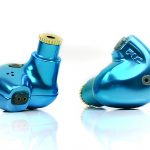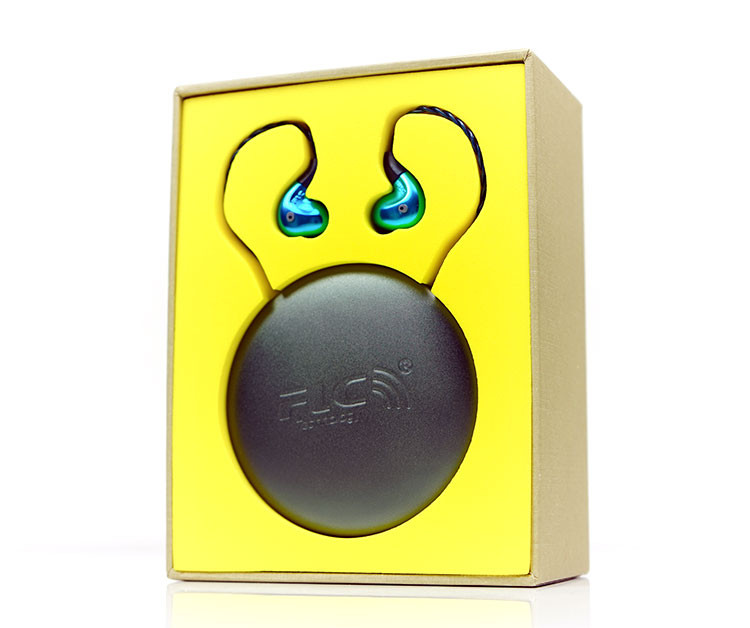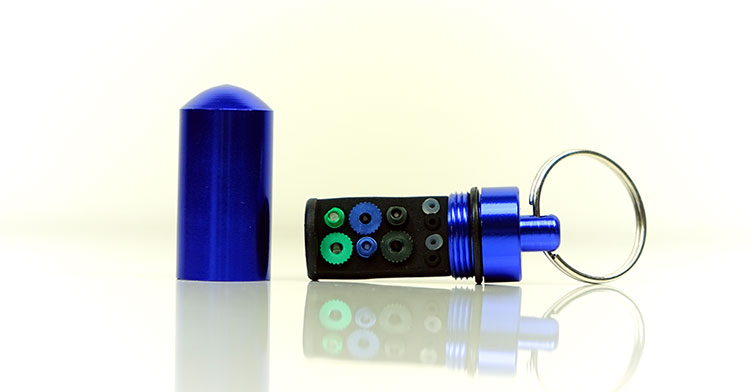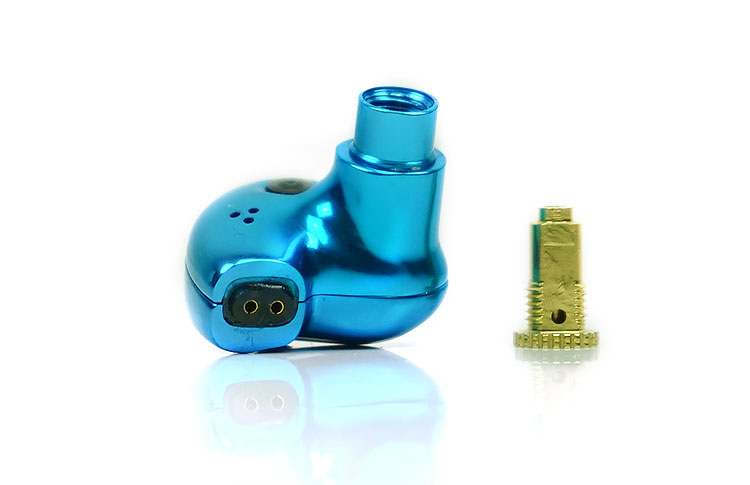The FLC8N from FLC Technology is the latest version of their high acclaimed hybrid multi-filter universal monitor. It is currently priced at $299.
Disclaimer: The FLC8n sent to us is a sample in exchange for our honest opinion. We thank the team at FLC Technology & Musicteck for giving us this opportunity.
To read more about FLC Technology products we have reviewed on Headfonics click here.
Note, this review follows our new scoring guidelines for 2020 which you can read up on here.
The China-based FLC Technology has proven to be one of the forerunners in the tunable hybrid IEM game with the success of the FLC8S back in 2015. Fast forward to 2018, FLC Technology has then built around the same concept with the filter tuning system for the release of the FLC8N.
The main feature of having 36 possible sound signatures in a hybrid IEM is rather a double-edged sword as it showed the vastness of FLC’s customizability but at the same time, some users would find the other filters considerably useless once they find their most desired signature. It’s also noteworthy to mention that “filter-rolling” is quite painstaking considering how easy the filters could be lost or damaged.
Nevertheless, FLC Technology has already carved a niche for itself in the tuneable hybrid IEM game and with the FLC8N, it’d be interesting to know how they have made improvements to such innovation.
The Pitch
The FLC8N follows suit to the 8S’ tuning system with 36 possible sound variations which are achieved by changing the 10 pairs of filters that control the sub-bass, bass and mids/treble.
But compared to the 8S, FLC Technology claims to have improvements, in its build as well as its sound, particularly in its soundstage. Users of the 8S would also get a better experience with the cables from the 8N as the latter opts for a more pliable and less springy feel.
Package & Accessories
Upon opening the box you’ll be greeted by the IEMs as well as the stylish and sturdy metal case that is placed on the foam cut out. Beneath those are the white and grey ear tips of various sizes (XS, S, M, and L) as well as the cleaning tool, shirt clip, and manual which will guide you through the possible combinations of filters to tweak the sound.
The tuning filters, meanwhile, are housed inside a tiny blue metal capsule just about the size of my thumb while there are also spare filters stored separately inside a plastic bag. A pair of tweezers is also included which would come in handy (or not) when swapping filters.
All in all, FLC Technology has really upped the ante in packaging as they managed to throw in a lot of accessories that would suit well for those who would like to tinker with their gear.
Build
Form Factor
Housing the internals of the FLC8N is a metallic cyan-colored metal shell. On the front of the shell, you’ll find the FLC logo as well as the port for the Ultra-Low Frequency (ULF) filter. On the backside are the port for the Low Frequency (LF) filter and the vent for the dynamic driver. The nozzle, on the other hand, is where you’ll find the port for the tuning bore for the filters that control the Midrange and High frequencies.
I have a few quirks with the finish though since to begin with, the color doesn’t sit well with my personal preference. There also seems to be a tiny gap in the shell’s seams which becomes wider near its connectors.
I don’t know if it’s glued or if it’s snapped on to something inside the shell but if I had a hand in its manufacturing, I would have opted for a full-metal shell to secure everything inside. But I guess the chance of the shell breaking in half through its gaps would be minimal unless though if you really intend to pry them open or throw them hard against the floor for some reason.
Comfort & Fit
The FLC8N’s shell has good size and contouring to ensure a deep fit inside the ear. The curves are smooth and its small form factor size allows you to fit the entire shell just outside your ears sans the bulge or bubble that sits on our concha like how custom IEMs or semi-custom IEMs are fitted. The nozzle, meanwhile, is long which is intended for deep insertion in the ear and so that the tuning bore would fit. The tips, on the other hand, have a long cylindrical shape and again it is designed to go in deep in the ear canal.
Overall, the comfort is top-notch as you can barely feel the IEM while wearing and it easily disappears in your ear while the seal and isolation are quite decent as a result of the deep insertion.
Connectors and Cables
The FLC8N utilizes a semi-protruded 0.78mm 2-pin connector. It’s a great thing that FLC has done away with the 0.75mm 2-pin connector from the 8S which made cable rolling quite a hassle due to compatibility.
As for the cables, FLC8N’s uses a 4-core 6N copper braided cable. Its pins are semi-recessed to ensure a flush fit on the semi-protruded socket while it also makes use of a gold-plated 3.5mm L-plug. It has a plastic Y-splitter with a window where you could see the transition of the braid from the 4-core braid to the left and right connectors. FLC claims that they intended to make such splitter to show that there are no solder joints in the y-splitter to ensure smooth signal transmission. It also comes with a plastic chin slider.
Overall, the cable is soft and very pliable. It has a little springiness to it but for me, it’s a positive thing since I don’t have to worry about tangling the cables whenever I roll it on my fingers or unwinding it. There’s a minute level of microphonics but it’s easy to eliminate if you make use of the chin slider.
Filter Tuning System
As aforementioned, the FLC8N has three tuning filters with 3 sets for the ULF, 3 for the LF and 4 for the MF/HF or filter. Listed below are the color designations of the filters and their respective effects on the sound.
Filter Color Effect
- ULF Red sealed plug High sub-bass
- ULF Grey filtered plug Medium sub-bass
- ULF Clear open plug Low Sub-bass
- LF Without a filter High mid-bass
- LF Black open plug Medium to high mid-bass
- LF Grey thin filter plug Medium to low mid-bass
- LF Clear thick filter plug Low mid-bass
- MF/HF Gold thin filter bore High Mids and medium treble
- MF/HF Green no filter bore Medium Mids and high treble
- MF/HF Gunmetal Thin filter bore Medium Mids and medium treble
- MF/HF Blue thick filter bore Medium Mids and low treble
Changing the filters is exciting yet tedious – exciting in a way that you get the chance to find the combination of filters that would best suit your preference but tedious since the filters, especially the ULF and LF are so tiny and delicate.
The tuning bores on the nozzles are easy to change since you’ll just have to unscrew them. The ULF and LF, however, would be quite a daunting task. To begin with, the plastic material of ULF and the rubber of the LF are very easy to damage. Compounding the woes for changing the ULF and LF filters is the fact that the tweezers have pointy edges which could in turn damage the filters. Add their very tiny form factor and you’ll have an increased chance of losing them.
What I would recommend is use the tweezers to pry the LF out just enough for you to later pinch them out of the ports. A safety pin would also come in handy when removing the ULF since this will allow you to open up the gaps on the ULF’s edges. Also, find a well-lighted flat surface to decrease the chance of dropping them on the floor and eventually losing them.
Page 2: Sound Impressions & Comparisons









